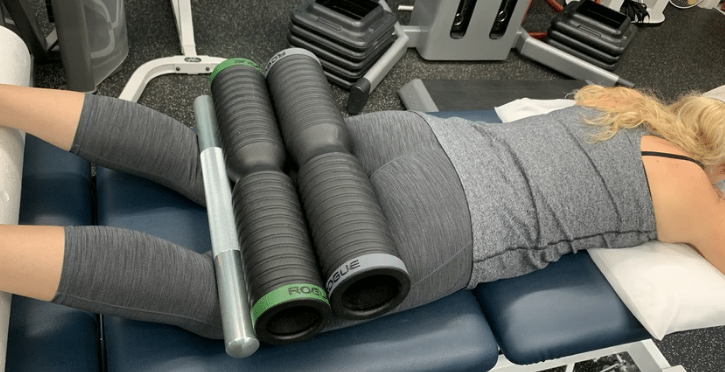Body tempering is quickly becoming a must-try recovery technique for fitness enthusiasts and athletes. Unlike traditional methods like foam rolling, body tempering involves using weighted rollers to help alleviate muscle tension, improve mobility, and enhance overall performance. If you’re looking to elevate your recovery process and see improvements in your fitness routine, this guide will show you how to incorporate body tempering effectively into your daily exercises. Whether you’re a beginner or a seasoned fitness pro, body tempering could be a game-changer for your routine.
What is Body Tempering?
Body tempering is a deep tissue recovery technique that uses large, weighted rollers to apply pressure to different muscle groups. The primary goal of body tempering is to target the fascia, muscles, and connective tissue, helping to relieve tension, enhance flexibility, and promote faster muscle recovery. Originating from strength training and sports rehabilitation, body tempering has gained traction in the fitness world due to its effectiveness. By using rollers made from steel or other heavy materials, body tempering provides an intense and highly beneficial massage-like effect on the body.
How Body Tempering Works to Improve Performance
Understanding how body tempering works can help you appreciate its effectiveness in improving your performance. When you incorporate body tempering into your fitness routine, it works by breaking down muscle adhesions and releasing stored tension in the fascia. This process enhances mobility and flexibility, allowing for smoother, more fluid movements during your workouts. By relaxing tight muscles, body tempering also accelerates muscle recovery, reducing soreness and stiffness post-workout. With regular use, you may notice a significant improvement in your range of motion, which can help prevent injuries and enhance overall strength training performance.
The Best Way to Incorporate Body Tempering into Your Fitness Routine
Incorporating body tempering into your fitness routine is straightforward and can be done in just a few simple steps. Start by including body tempering as part of your warm-up or cool-down process, depending on your needs. For a proper warm-up, gently roll the body tempering tool over areas that tend to get tight, such as your legs, back, and shoulders, for about 5 to 10 minutes. This helps prepare the muscles by increasing blood flow and loosening up any stiffness before your workout.
After your workout, use body tempering for 10 to 15 minutes to target any specific muscles that feel tense or sore. Focus on rolling over large muscle groups like the hamstrings, quads, and calves. Over time, you can gradually increase the pressure and duration based on your comfort level. Aim for 2-3 times per week for optimal results, but you can adjust the frequency based on your fitness goals.
Body Tempering vs. Other Recovery Techniques
While body tempering is an excellent addition to any fitness routine, it’s helpful to compare it with other common recovery methods to see why it might be the best choice for you. Foam rolling, for instance, is another popular recovery technique that uses a softer material and applies less pressure compared to body tempering tools. While foam rolling is effective at improving flexibility and muscle relaxation, body tempering provides a deeper, more intense release of muscle tension, making it ideal for those who need a more thorough recovery session.
Other techniques, such as massage therapy, also provide deep tissue relief, but body tempering offers the advantage of being a more accessible and self-sufficient option, allowing you to perform it on your own without needing a therapist. Additionally, body tempering can target larger muscle groups with ease, making it a great tool for athletes and weightlifters who experience frequent tightness or soreness.
Potential Risks and How to Avoid Them
Although body tempering is generally safe when done correctly, it’s essential to be mindful of potential risks. Using too much pressure or rolling over sensitive areas can lead to bruising or discomfort. To avoid this, start with lighter pressure and gradually increase intensity as your body becomes accustomed to the technique. Make sure to avoid areas with severe injuries or inflammation, and always listen to your body—if something feels too painful, reduce the pressure or stop altogether.
For beginners, it’s wise to consult with a fitness professional to ensure you’re using the body tempering tools correctly. They can guide you on the best techniques and help you avoid common mistakes, ensuring you gain the maximum benefit without risking injury.
Body Tempering for Specific Fitness Goals
Body tempering isn’t just for general recovery; it can be tailored to specific fitness goals. For example, bodybuilders and athletes who lift heavy weights can benefit from body tempering to break down muscle adhesions and reduce the risk of injury. If you’re focused on building strength, body tempering can help increase flexibility and mobility, allowing for more effective and safer workouts. Additionally, for those recovering from injuries, body tempering helps by releasing tension around the affected area and promoting faster healing.
If you’re someone who experiences chronic muscle pain, body tempering can also provide long-term relief by reducing tightness and increasing circulation to the muscles. Whether you’re training for strength, injury recovery, or general wellness, incorporating body tempering into your routine can help you reach your goals more efficiently.
Frequently Asked Questions About Body Tempering
To clear up any confusion about body tempering, here are answers to some of the most common questions:
- How long should you use body tempering tools?
Generally, use body tempering tools for 10-15 minutes per session, focusing on areas that feel tight or sore. However, the duration can vary depending on your fitness level and comfort. - Can body tempering replace stretching?
Body tempering complements stretching, but it doesn’t fully replace it. While stretching improves flexibility, body tempering provides a deeper release of muscle tension and fascia, enhancing your range of motion. - Is body tempering suitable for beginners?
Yes, body tempering is suitable for beginners. Start with lighter pressure and gradually increase intensity as your body adapts.
Takeaway
Body tempering is an incredibly effective technique that can take your fitness routine to the next level. Whether you’re aiming for improved flexibility, faster muscle recovery, or increased strength, body tempering is a valuable tool that helps you achieve your goals. By incorporating body tempering into your fitness routine, you can experience enhanced mobility, reduced muscle soreness, and a more efficient recovery process. Start slow, listen to your body, and soon you’ll reap the many benefits of this powerful technique.
Ready to add body tempering to your fitness routine? Begin with gentle pressure, target specific muscle groups, and watch your performance and recovery improve.






